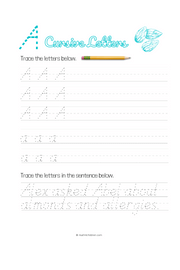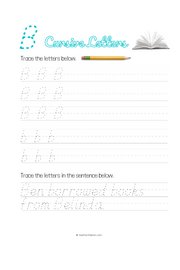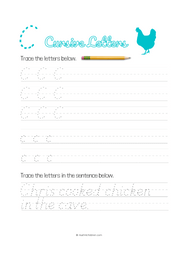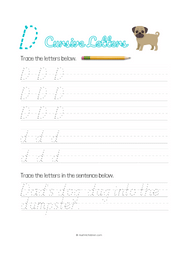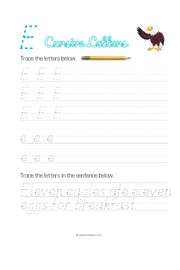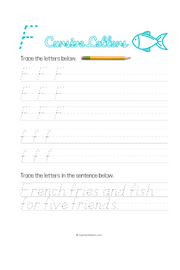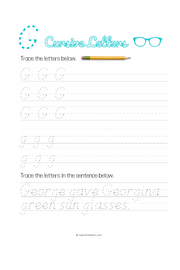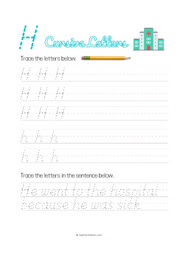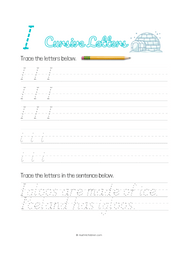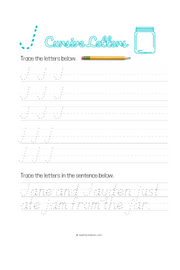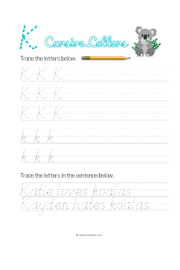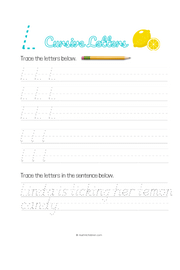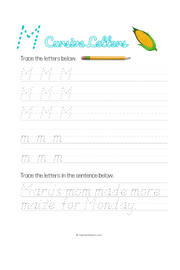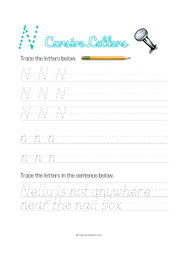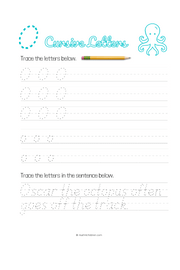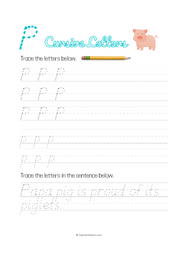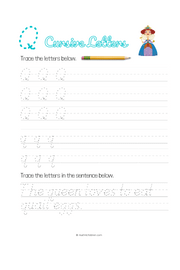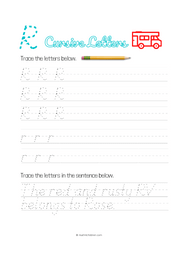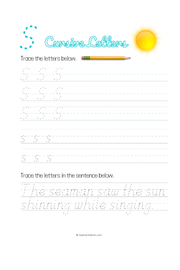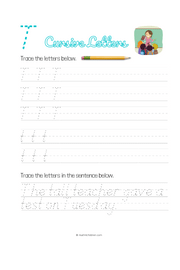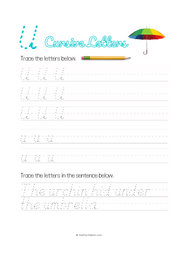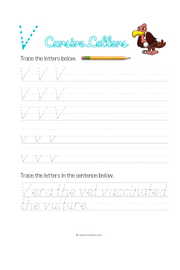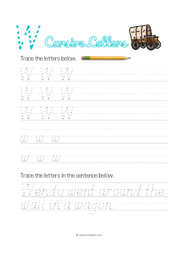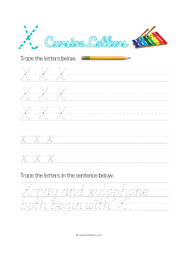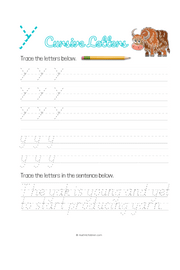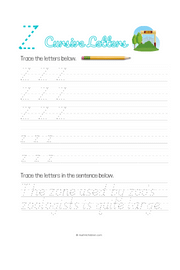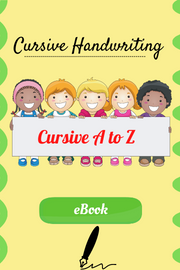Why Cursive Is Important
This page features an essay on why cursive is important. Scroll to the buttom of the page to read the full article. Remember to download the free cursive writing resources on this page.
Cursive writing, also known as script or longhand, is a style of handwriting in which the letters of a word are connected by flowing strokes. It is a popular form of handwriting that has been taught in schools for centuries, and it has a number of benefits that make it an important skill for students to learn. One of the main reasons cursive is important is that it helps to improve handwriting speed and legibility. When writing in cursive, the pen does not need to be lifted off the page as often as it does when writing in print, which allows for a more fluid and continuous writing style. This can make writing in cursive faster and more efficient, especially when taking notes or writing longer documents. In addition, the connected letters in cursive can help to make the writing more legible, as the continuous strokes of the pen make it easier to distinguish one letter from another. This is especially useful in the professional world, where clear and legible handwriting is essential for effective communication. Another reason cursive is important is that it helps to improve fine motor skills and hand-eye coordination. Writing in cursive requires precise movements and control of the pen, which helps to strengthen the muscles in the hand and improve coordination. This can be especially beneficial for children, as it can help to develop the dexterity and control needed for tasks such as tying shoelaces and using scissors. These skills can also have practical applications in other areas of life, such as playing sports or using tools. Cursive writing also has cognitive benefits. Some research suggests that writing in cursive can improve memory and retention, as the process of connecting the letters requires the brain to engage in additional cognitive processes. In addition, the act of writing in cursive can help to stimulate the brain and improve concentration and focus. These benefits can be particularly useful in the classroom, where students are expected to pay attention and retain information for extended periods of time. In addition to these practical benefits, cursive writing also has a rich cultural and historical significance. Many famous documents, such as the Declaration of Independence, were written in cursive, and the ability to read and write in cursive is a useful skill for understanding and appreciating these historical documents. Cursive writing is also an important part of many cultural traditions, and learning to write in cursive can help students to understand and appreciate these traditions. Despite the many benefits of cursive writing, it has become less common in recent years due to the increasing reliance on technology for communication and the shift towards digital forms of writing. However, it is still a valuable skill to have, and many educators and experts believe that it is important for students to learn cursive as part of a well-rounded education. In conclusion, cursive writing is an important skill for students to learn for a number of reasons. It can help to improve handwriting speed and legibility, develop fine motor skills and hand-eye coordination, and provide cognitive benefits such as improved memory and concentration. In addition, it has a rich cultural and historical significance that makes it an important part of our heritage. While it may not be as widely used as it once was, it is still a valuable skill to have, and one that is worth preserving for future generations.
Tips For Teaching Kids How to Write In Cursive
Teaching kids how to write in cursive can be a rewarding experience for both the teacher and the students. Here are some steps that teachers can follow to effectively teach kids how to write in cursive: Start by introducing the basic strokes and shapes of cursive letters. It can be helpful to use worksheets or handwriting guides to demonstrate the proper way to form each letter. Practice writing individual letters and words. Encourage students to pay attention to the size and spacing of the letters, as well as the connections between letters. Gradually increase the speed and fluency of writing. This can be done through writing drills and exercises that focus on forming letters quickly and smoothly. Encourage students to use their own handwriting style. While it's important for students to learn the proper form of cursive letters, it's also important to allow them to develop their own handwriting style. Provide plenty of opportunities for students to write in cursive. This can include writing assignments, journaling, or even just writing notes to friends. The more practice students have, the more comfortable and skilled they will become at writing in cursive. Overall, the key to teaching kids how to write in cursive is to be patient and provide plenty of practice and support. With time and practice, students should be able to develop their own unique handwriting style and become confident, fluent cursive writers.
When to Teach Kids How to Write In Cursive
Teaching cursive writing to children can be a valuable and enriching experience, as it helps to improve fine motor skills and can even boost cognitive development. However, the age at which children should start learning cursive writing can vary. Here are a few things to consider when deciding when to teach your child cursive writing: Developmental readiness: Children need to have the physical and cognitive skills necessary to learn cursive writing. This usually happens around the age of 7 or 8, when children have developed the fine motor skills required to hold a pencil or pen and form letters. However, some children may be ready earlier or later, depending on their individual development. Curriculum requirements: Some schools may start teaching cursive writing in the second or third grade, while others may not introduce it until later. It's a good idea to check with your child's teacher or school to see what their curriculum covers and when. Personal preference: Some parents may want to teach their children cursive writing at home, either before or after it is introduced in school. This can be a great way to give your child a head start or to reinforce the skills they are learning in school. Benefits of cursive writing: Cursive writing can have a number of benefits for children, including improved fine motor skills, increased cognitive development, and even better handwriting legibility. It can also be a fun and creative activity for children, helping to boost their confidence and self-esteem. Ultimately, the decision of when to teach your child cursive writing is a personal one and will depend on your child's individual needs and development. It's important to keep in mind that learning cursive writing is a process, and it may take some time for your child to master the skill. With patience and practice, your child will be able to develop the skills needed to write in cursive with confidence and fluency.

